Our extra-large special edition is here. Subscribe today and receive the 25% longer issue at no extra cost!
Monster Hunter: World Bestiary Day 3 – The Destructive Titan Nergigante
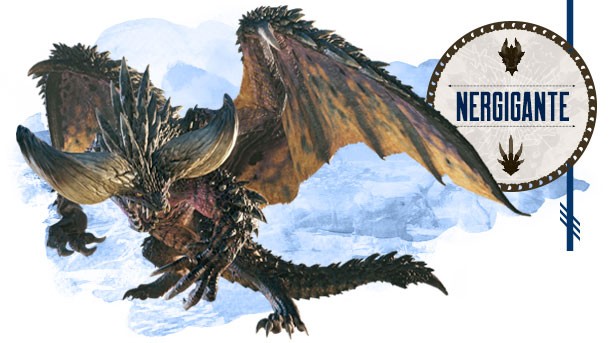
Last week, we explored Monster Hunter: World’s Coral Highlands map, a striking location that looks like a dried-out version of an underwater paradise. This week, we’re taking a similar approach with three of the upcoming game’s monsters. During our visit to Capcom’s Osaka offices, we got exclusive presentations on the design process for each of these beasts, including a look at their early iterations and how they finally arrived at the versions you’ll be able to hunt in January.
We’ve been building up to a crescendo this week, with our earlier examinations of the Paolumu and Tobi-Kadachi. Not to take anything away from those two monsters, but they’re barely in the same league as our final bestiary entry, the mighty Nergigante. There’s a reason why this massive elder dragon made our cover.
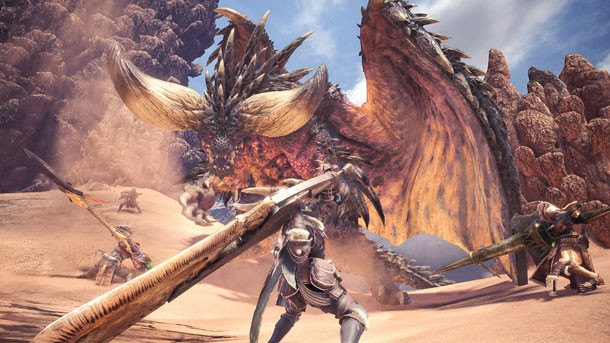
Monster Hunter: World’s executive director and art director, Kaname Fujioka, says his team wanted to defy its own conventions with Nergigante. “We wanted to make the flagship an elder dragon, but elder dragons have typically had the more fantastical abilities in the series,” he says. “I wanted to have a more grounded version of that and think about what type of capabilities he would have. My initial concept was two keywords: destruction and regeneration. He has great destructive power, but he can also regenerate.”
Nergigante is a lumbering beast that attacks without much regard for its own safety. In fact, the strength of its attacks cause it to break off pieces of itself. Fortunately for him, it’s able to regenerate those spikes and other parts.
“Our initial concept, based on the regeneration idea, was that it would have these limbs and wings that would be growing out spikily as they regenerate and are destroyed,” Fujioka says. “The reason we didn’t proceed with this design was that it didn’t give us enough of a sense of the cycle that’s going to repeat throughout the battle, where it’s going to be destruction and regeneration recurring over and over. It’s difficult to determine from the design if that was actually happening, so we didn’t go with it.”
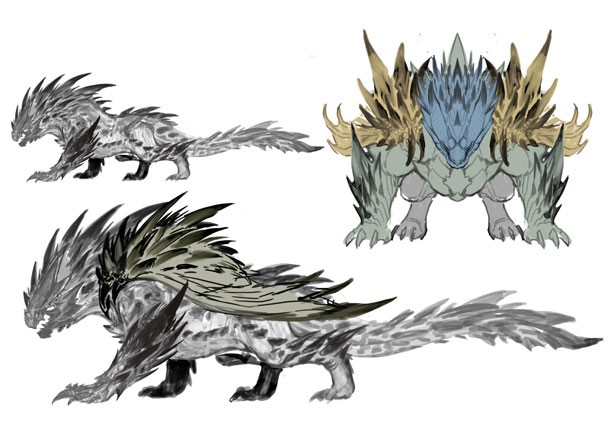
The next iteration was closer to what Fujioka had in mind. “We moved on to this design. While it was interesting because it was very spiky and it gives the idea that they’re growing back on top of each other in a twisted, experimental way, it was just too alien. It didn’t have that ‘creature-ness’ that we wanted it to have, where it looked like a more grounded animal for the series. There were some interesting directions, but it wasn’t the way we wanted to go.
“The design went more in the direction that it’s going to be very powerful and have destructive power, and we decided that it was going to be very front loaded, that it was going to have these very powerful forelimbs and that the front of its body would be where it counts. However, that design didn’t have any particularly special feature around it. It was basically just a lizard, so the designer started to add more interesting aspects such as the unique spikiness. The idea that the spikes themselves are the part which will be used to attack and they’ll break off and then regenerate, I thought was a really good fit for what we were going for in the first place. I really liked the silhouette that the monster has and thought this was the direction we had to pursue.”
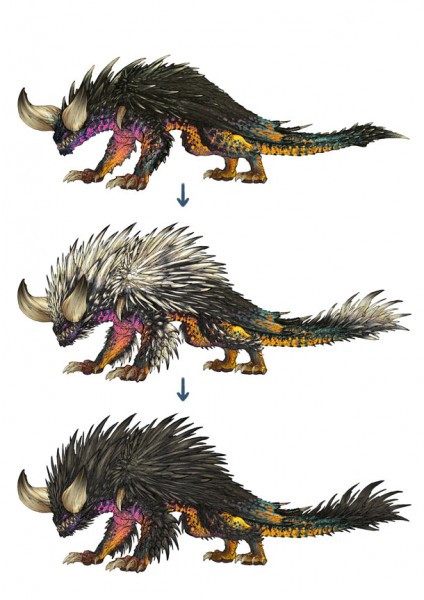
Fujioka jokes that that concept came at a price. “The person who has to actually design the monster model wasn’t too happy, because there are so many spikes on this thing and he could see a long road of modeling spikes on him,” he says. “There are 1,000 or more spikes on the front alone. There’s a lot of work to do that.”
As we’ve been discussing throughout the week, the monster itself is only part of the design process. Since players can use parts of the monsters to build unique-looking armor and weapons, the team has to find ways to incorporate monster designs into gear.
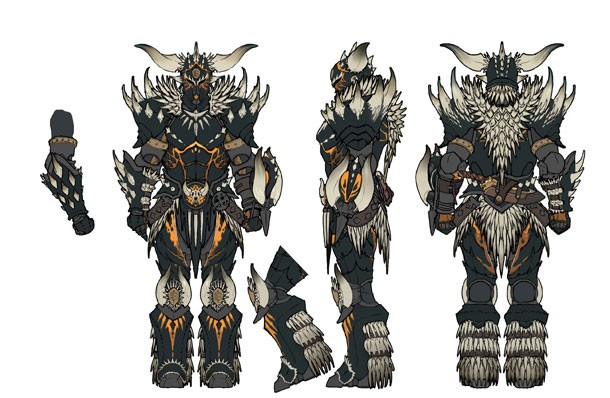
“The first design concept focused on the demonic appearance of the Nergigante, and that’s where you get this demon king sort of armor,” Fujioka says. “But Nergigante is more wild than that. The first design looked too neat, so I wanted to take the barbaric, wild nature of the monster and express that through the armor. The silhouette has been broken up more substantially here with the addition of all the spikes.”
For the weapons, Fujioka wanted to push the idea of Nergigante’s squat profile and overall strength. As a result, the weapons that players can craft using his parts are unique – serving a dual purpose as trophies, showing off to others that players who wield them have earned the right through intense combat.
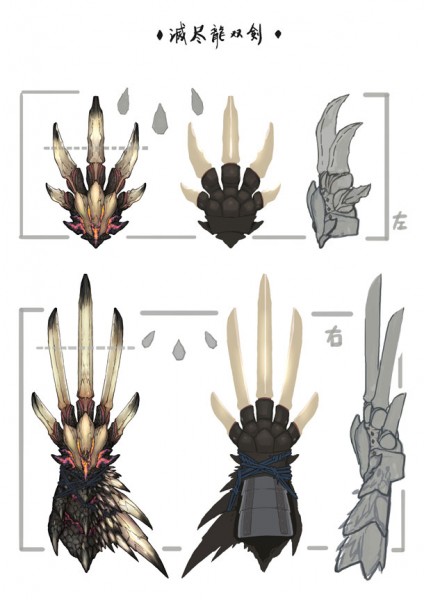
“The monster has really powerful forelimbs, so the dual blades are normally two blades – these are almost like two clawed gloves that the character has on and the players attack with the claws instead of blades,” Fujioka says. “The lance basically looks like you’ve taken the forelimb off of a slain Nergigante and cut the lance right out of it.
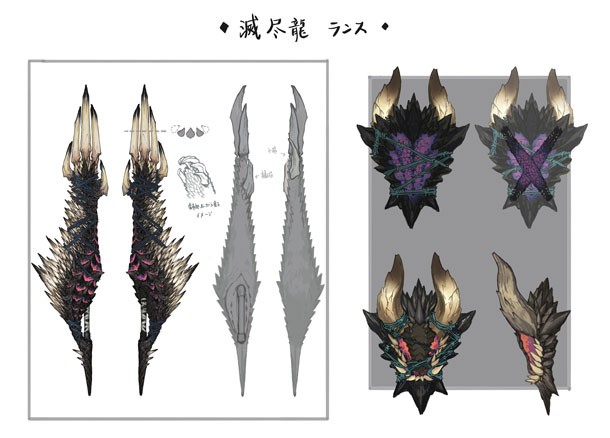
"For the greatsword, we’ve taken the way that the monster’s spikes unfold, and when you do a charge attack the spikes are going to suddenly pop out. The bowguns take the powerful silhouette of the monster and also its spikiness and implement that into some seriously dangerous-looking guns. Most of the bowguns are quite long and slender, so having this more close-cropped, almost sawed-off shotgun approach makes them look more dangerous, and they’re quite unique in the universe of Monster Hunter.”
We've got more Monster Hunter: World features and videos on the way, so be sure to come back to our hub in the days and weeks to come!

Get the Game Informer Print Edition!
Explore your favorite games in premium print format, delivered to your door.
- 10 issues per year
- Only $4.80 per issue
- Full digital magazine archive access
- Since 1991










